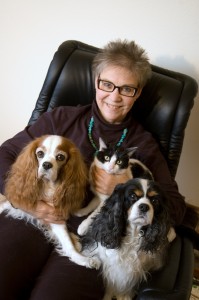 It was a summer evening and the dogs and I were out for last call. A man and woman at the end of the block were standing next to the waist-high wall that bordered my neighbor’s steep property.
It was a summer evening and the dogs and I were out for last call. A man and woman at the end of the block were standing next to the waist-high wall that bordered my neighbor’s steep property.
It’s unusual but not alarming to see strangers lingering in our busy beach neighborhood at night. However, I’ve learned street smarts from my terminally friendly but discerning Cavaliers, so I stopped, even though we were fully two lots away from them.
Then I saw that the woman was holding a dog leash above the neighbor’s wall: what the heck? No dog could top that wall: the couple must have lifted their dog over it. Wow. They were literally going out of the way to let their dog loose on private property. When they spotted us, they moved in to restrain their dog.
I stopped, pulling my dogs close.
“Just to let you know,” the woman said. “We have our dog up here.”
Really?
“My dog’s eating grass,” she explained.
What?
So, okay, two things.
First, if you have to warn me that your dog is with you, you mean that you both are a threat to me and my dogs, so stay the hell home. It’s people like you with unsafe dogs who’ve made it necessary for people like me to carry dog deterrent spray. It’s legal, I know how to use it, and I will. So your dog may not be safe, but guess what? Since my youngest dog got mauled, I’m not safe, either. If your dog rushes mine it will get a face full and you’ll get a hefty fine from animal control and a notch on their watch list.
Second, do you understand the terms ‘private property’ and ‘trespassing’?
We’re still civilized in Seattle, which means that you can’t walk your dog on the property holder’s side of the sidewalk. You can’t walk yourself there, either. Or pee, or poop, or trample the landscape, or eat the grass.
It’s called trespassing. It’s illegal. It’s destruction of private property. It’s plain and simple rude.
Not willing to obey the law? Then read up on manners. Did you not have a mother?
I stood there that night, my dogs quietly by my side, and I said to the woman, “You’re on private property.”
“Our dog’s eating grass,” she said, like that was a reasonable explanation.
Unlike many dog walkers, who pay no attention to where their dogs are walking, she was actually lifting hers up so it could forage on my neighbor’s property. She was aiding and abetting.
Un. Be. Lieve. Able.
“It’s called trespassing,” I said, turning my dogs around and heading home.
“He’s just eating grass,” she yelled.
“It’s trespassing,” I said, emphasizing each syllable so the sarcasm and disapproval were clear.
“You give dog owners a bad name,” I said as I left.
Do you? If you let your dog set a foot or a drop of pee on private property, you’re rude. You’re also a criminal. And so is your dog.
The rest of us who are responsible dog owners deserve better. So do our dogs.
The saddest thing? Your dog deserves better. Clearly somebody better than you.
(c) 2011 Robyn M Fritz

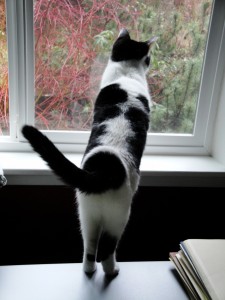 We live in a small condo: just me, two Cavalier spaniels (Murphy and Alki), and Grace the Cat. Well, okay, let’s include my crystal partner, Fallon, and Raymond, a fifty-something jade tree who spreads out like an oak.
We live in a small condo: just me, two Cavalier spaniels (Murphy and Alki), and Grace the Cat. Well, okay, let’s include my crystal partner, Fallon, and Raymond, a fifty-something jade tree who spreads out like an oak.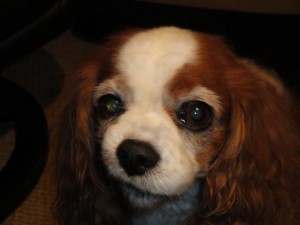 Have you always wanted to talk with an animal? And hear it talk back?
Have you always wanted to talk with an animal? And hear it talk back? Toys are a big part of the magical goofy fun side of family life. In our case, it’s a multi-species family life, which means we are a woman, two Cavaliers, and a goofy eight-pound cat.
Toys are a big part of the magical goofy fun side of family life. In our case, it’s a multi-species family life, which means we are a woman, two Cavaliers, and a goofy eight-pound cat.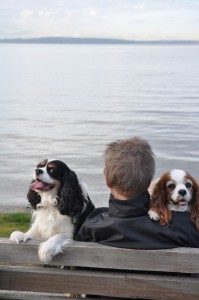 There are so many people doing animal communication that they’ve begun to specialize. I don’t do animal communication exclusively. I communicate with all life, from animals to businesses, homes, and nature, including wild/domestic land and weather systems.
There are so many people doing animal communication that they’ve begun to specialize. I don’t do animal communication exclusively. I communicate with all life, from animals to businesses, homes, and nature, including wild/domestic land and weather systems.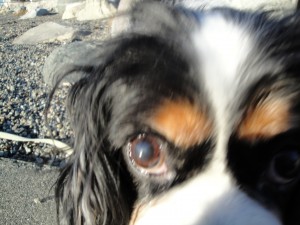


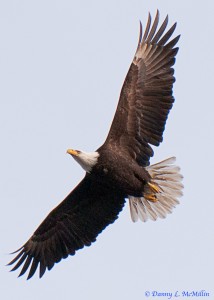
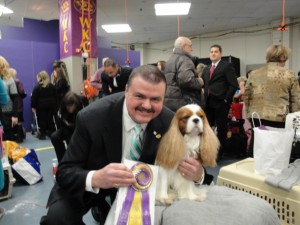 If you’re going to New York and have to leave your own dogs (and cat) at home, there’s one sure way to get your dog fix: arrange to be there in February, when New York goes doggy for the Westminster Kennel Club Dog Show at Madison Square Garden in Manhattan.
If you’re going to New York and have to leave your own dogs (and cat) at home, there’s one sure way to get your dog fix: arrange to be there in February, when New York goes doggy for the Westminster Kennel Club Dog Show at Madison Square Garden in Manhattan.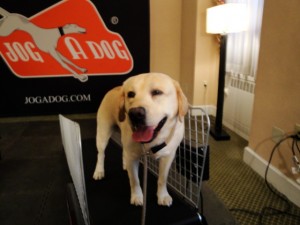 At the Affinia Hotel I followed the sign to the dog exercise room. That’s where the people from Jog a Dog had set up two of their dog treadmills. Established 40 years ago by an inventor who trained German Shepherds for rigorous police and protection work (called schutzhund), today it’s a thriving business catering to canine athletes, from conformation specialists (show dogs) to agility or tracking experts.
At the Affinia Hotel I followed the sign to the dog exercise room. That’s where the people from Jog a Dog had set up two of their dog treadmills. Established 40 years ago by an inventor who trained German Shepherds for rigorous police and protection work (called schutzhund), today it’s a thriving business catering to canine athletes, from conformation specialists (show dogs) to agility or tracking experts.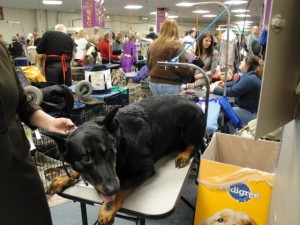 The show circuit for these two was an afterthought. Marlene purchased Gideon when he was 11 weeks old, to train as a search and rescue dog. Together they work for Klamath Search and Rescue in Klamath Falls, Oregon. When people suggested his conformation might make him a show dog, Marlene decided to go for it, which is how Gideon became a champion and was at Westminster (he did not win this year).
The show circuit for these two was an afterthought. Marlene purchased Gideon when he was 11 weeks old, to train as a search and rescue dog. Together they work for Klamath Search and Rescue in Klamath Falls, Oregon. When people suggested his conformation might make him a show dog, Marlene decided to go for it, which is how Gideon became a champion and was at Westminster (he did not win this year).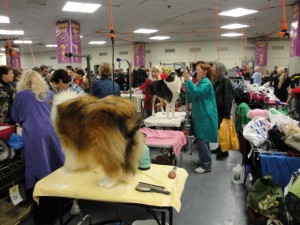 All morning long I snapped photos of dogs being primped for their big moment, their hair wrapped or snipped, while others snoozed or greeted visitors. Their humans educated people about their breed, whether they herded sheep or held down a lap in style. Their emphasis? While showing dogs is a sport they enjoy, the dogs are family first and foremost.
All morning long I snapped photos of dogs being primped for their big moment, their hair wrapped or snipped, while others snoozed or greeted visitors. Their humans educated people about their breed, whether they herded sheep or held down a lap in style. Their emphasis? While showing dogs is a sport they enjoy, the dogs are family first and foremost.